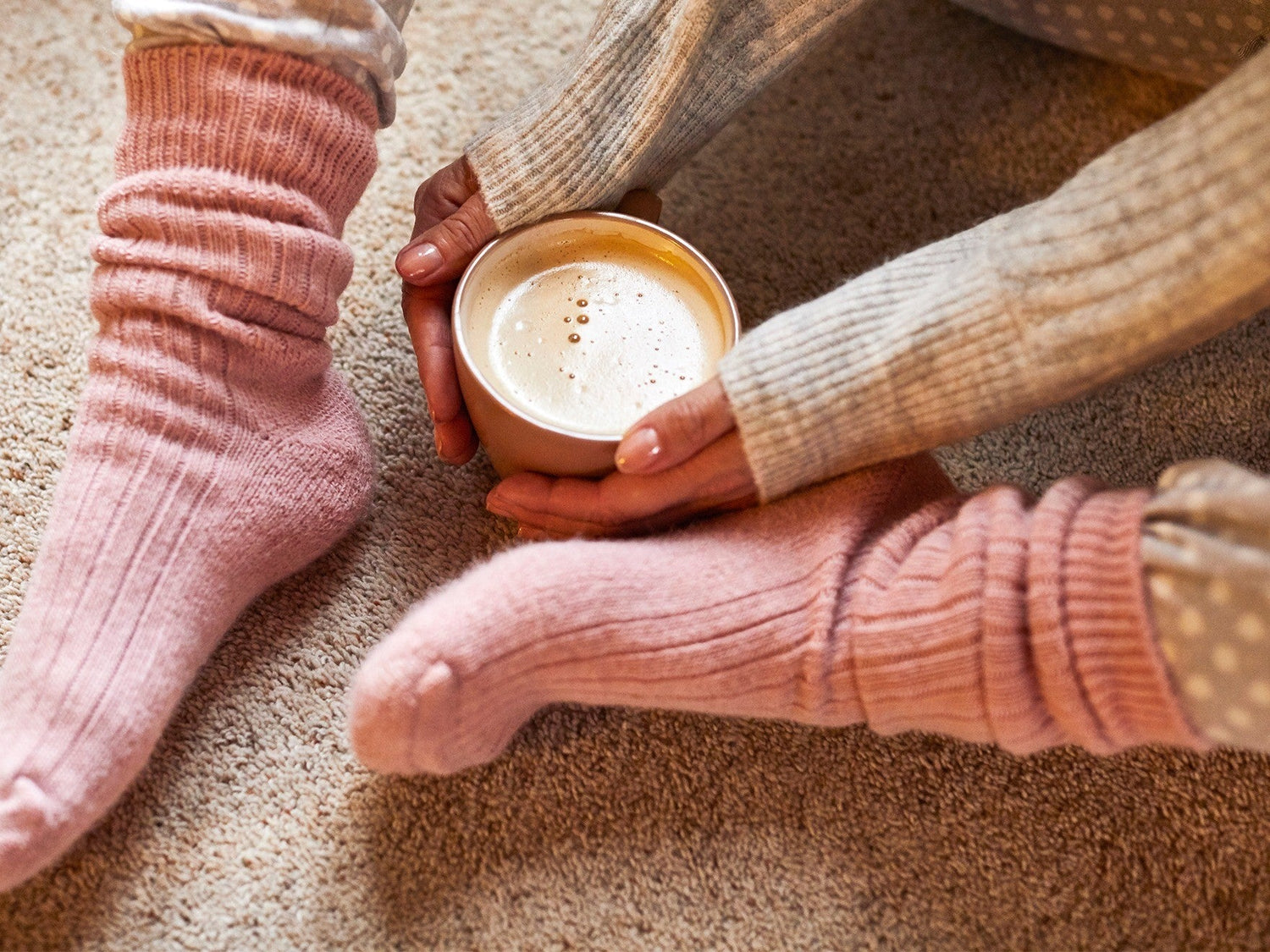The Ultimate Guide to Everyday Socks for Beginners (2025)
Step into comfort and discover how the right everyday socks can truly transform your daily routine. Whether you’re new to selecting socks or just looking to upgrade, this guide breaks down everything beginners need to know about everyday socks in 2025.
You’ll learn about the best materials, types, sizing, care, and how to pick the perfect pairs for your lifestyle. Unlock the secret to all-day comfort, style, and confidence with practical advice designed for real life. Ready to give your feet the attention they deserve? Let’s start your journey to better everyday socks.
Understanding Everyday Sock Materials
Choosing the right materials for your everyday socks can make a surprising difference in comfort, durability, and even your health. Whether you're on your feet all day or lounging at home, understanding what your socks are made of is the first step to happier feet.
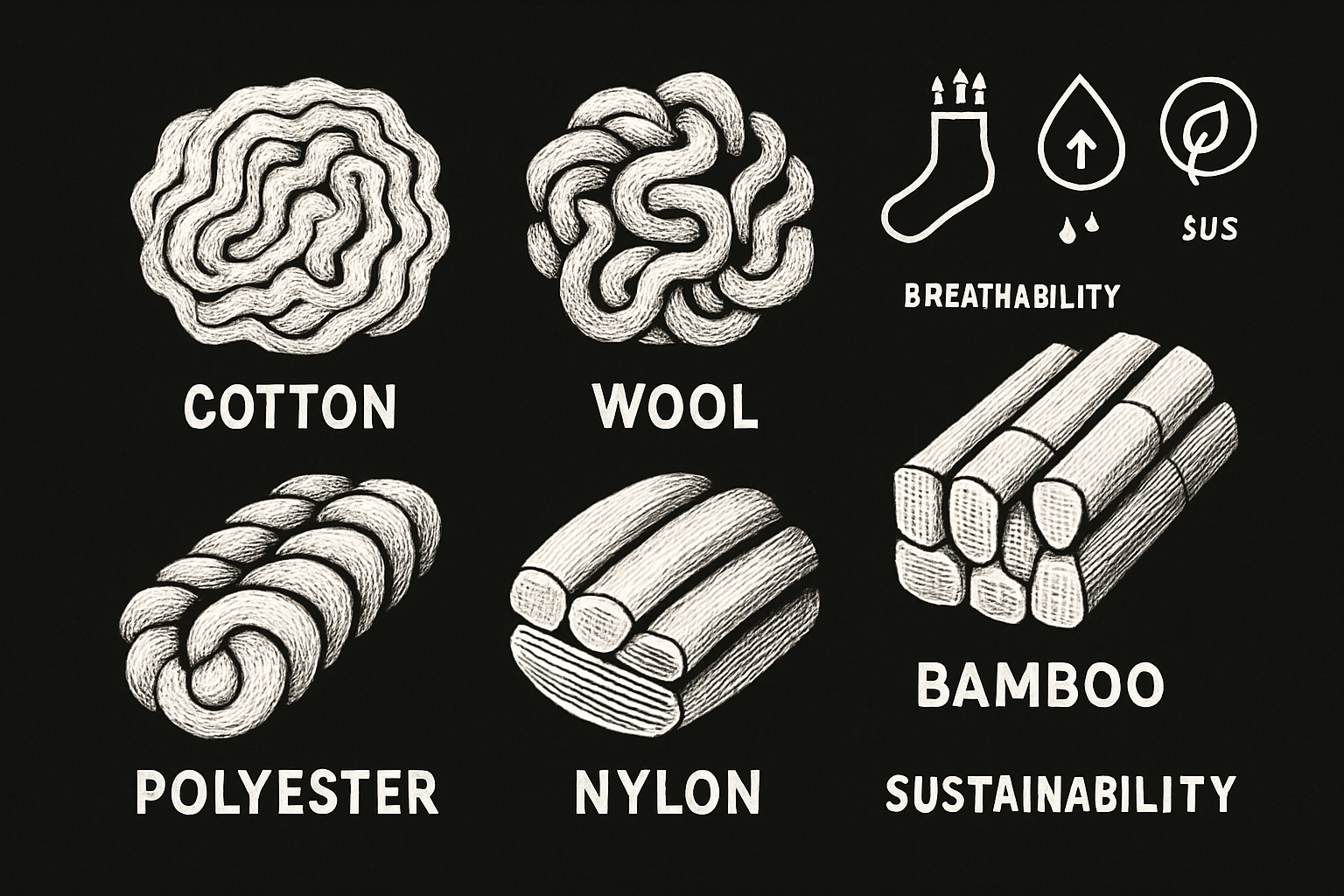
Natural Fibers vs. Synthetics: What’s Best?
When it comes to everyday socks, the material you choose shapes your experience. The most common options are cotton, wool, bamboo, polyester, and nylon. Each has its own strengths and weaknesses.
Natural fibers—like cotton, wool, and bamboo—are favored for their breathability and softness. Cotton is lightweight and affordable, but it can hold onto moisture. Wool, especially Merino wool, is a standout for all-season use. It keeps feet warm in winter, cool in summer, and naturally resists odors. Bamboo is silky and hypoallergenic, making it ideal for sensitive skin. A 2024 survey found that 65% of consumers prefer natural fibers in their everyday socks for superior comfort.
Synthetic fibers—such as polyester and nylon—excel in durability and moisture-wicking. These materials dry quickly, resist wear, and are often more affordable. Polyester is a top pick for athletic performance, while nylon adds stretch and shape retention. However, synthetics can trap heat and may not control odor as effectively as natural fibers.
Here’s a quick comparison:
| Material | Pros | Cons |
|---|---|---|
| Cotton | Soft, breathable, affordable | Holds moisture, less durable |
| Wool | All-season, odor-resistant | Can be pricier, needs care |
| Bamboo | Silky, hypoallergenic, eco-friendly | Less durable, can pill |
| Polyester | Durable, quick-drying, affordable | Less breathable, odor retention |
| Nylon | Adds stretch, durable | Not as breathable |
Environmental impact also matters. Natural fibers are biodegradable, while synthetics can shed microplastics. For those with sensitive skin, hypoallergenic options like bamboo or certain premium cottons are wise choices.
Curious how fabric choices affect comfort and foot health? This Sock friction and fabric parameters study explores how different materials impact friction, helping you make smarter decisions for your everyday socks.
How Material Affects Comfort and Performance
The comfort and performance of your everyday socks depend heavily on material properties. Cushioning and softness vary: wool and bamboo offer plush comfort, while polyester blends provide a snug, athletic fit.
Temperature regulation is another key factor. Wool naturally insulates, keeping feet cozy in cold weather yet cool when it's warm. Bamboo fibers help wick away moisture, making your feet feel dry and fresh. Cotton is breathable but can become soggy if you sweat a lot.
For moisture management, bamboo and wool outperform most synthetics—both draw sweat away from the skin, reducing the risk of blisters and odor. Antimicrobial properties in wool and bamboo help keep bacteria and smells at bay, a big plus for all-day wear.
Athletes often lean toward synthetic blends in their everyday socks for superior sweat control and quick drying. However, if you value softness and odor resistance, Merino wool or bamboo might be your best bet.
In summary, the right material can make everyday socks feel like a treat for your feet, no matter your lifestyle or activity level.
Types of Everyday Socks: A Style and Function Guide
Choosing the right pair of everyday socks isn’t just about comfort—it’s also about function and personal style. With so many lengths, designs, and innovations available for 2025, understanding your options can help you find socks that fit your routine and personality.
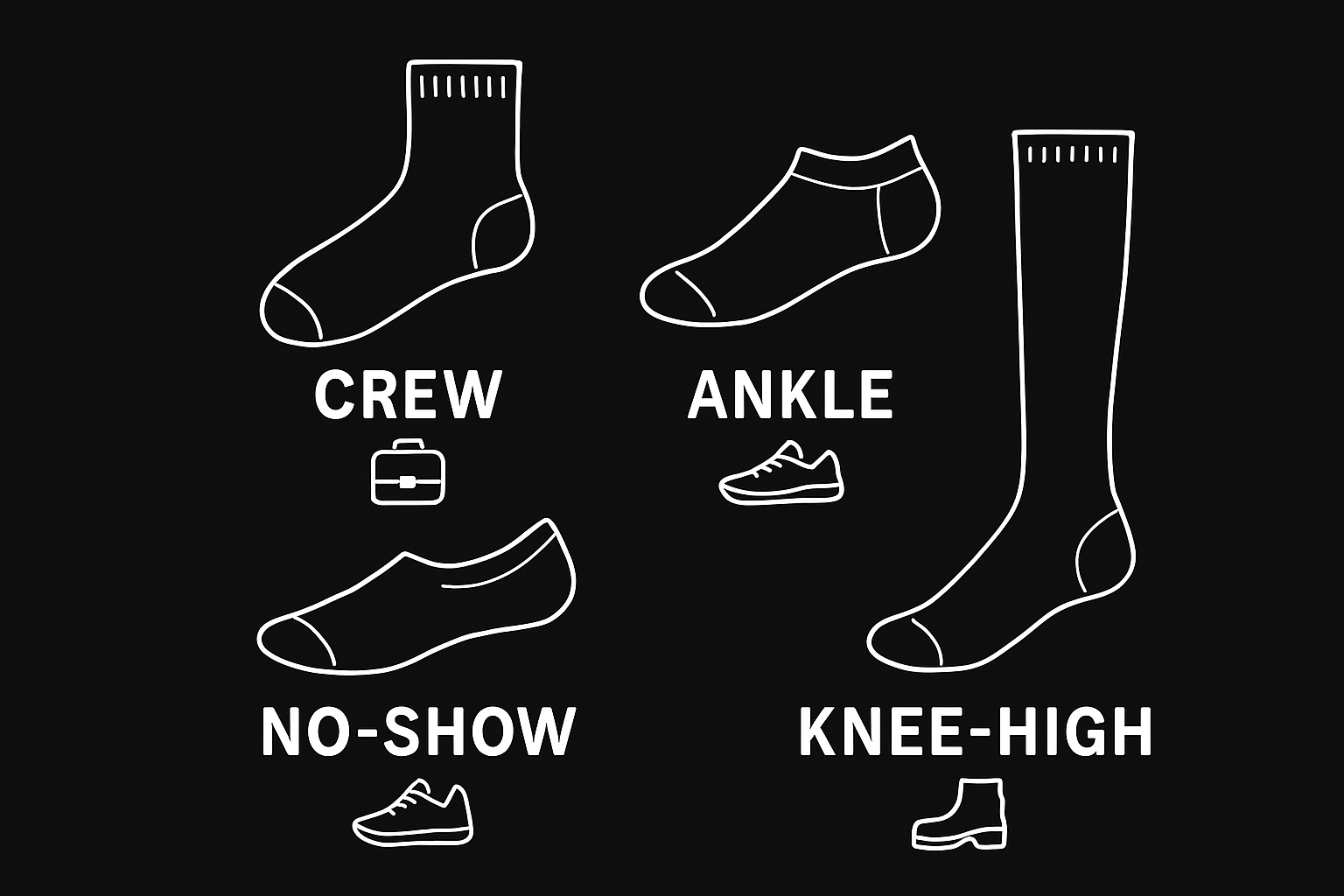
Crew, Ankle, No-Show, and More: Choosing the Right Length
Everyday socks come in a variety of lengths, each suited for different activities and looks. The most common types include crew, ankle, and no-show socks, with knee-highs also gaining popularity for boots and colder seasons.
- Crew socks rise to the mid-calf and remain the most popular, making up 40% of sales in 2024. They’re ideal for business casual outfits and offer both coverage and style.
- Ankle socks sit just above the shoe line, perfect for sneakers and everyday wear, especially in warmer weather.
- No-show socks are designed to stay hidden inside low-cut shoes, blending in seamlessly with sneakers or loafers for a discreet look.
- Knee-high socks provide extra warmth and are often chosen for boots or as a fashion statement.
| Sock Type | Length | Typical Use | 2025 Trend |
|---|---|---|---|
| Crew | Mid-calf | Business casual | Bold patterns, eco |
| Ankle | Above shoe line | Everyday, sneakers | Minimal, athletic |
| No-show | Hidden in shoe | Loafers, sneakers | Sustainable, subtle |
| Knee-high | Below knee | Boots, cold weather | Statement, textured |
Fashion in 2025 leans toward bold patterns and sustainable materials, encouraging wearers to express personality with their everyday socks. For example, someone dressing for the office might select a classic crew sock in a subtle color, while gym-goers often reach for moisture-wicking ankle or no-show socks. The right length not only matches your outfit but also supports comfort throughout your day.
Specialty Socks for Everyday Needs
Beyond the typical styles, specialty everyday socks are designed for unique needs and enhanced comfort. Diabetic socks feature non-binding tops and seamless toes, reducing pressure and irritation for sensitive feet. Compression socks are another popular choice, offering graduated pressure to promote circulation—ideal for people who stand all day, such as teachers and nurses.
- Diabetic socks: Help prevent blisters and pressure points.
- Compression socks: Reduce swelling and fatigue during long shifts.
- Seamless socks: Minimize friction, perfect for those prone to irritation.
Cushioned socks are also a favorite for individuals who spend hours on their feet. For example, a nurse may rely on compression socks for support, while a teacher might prefer extra cushioning to absorb impact throughout the day. These specialty everyday socks combine practical features with comfort, ensuring you can focus on your routine without distraction.
Sizing, Fit, and Comfort: Getting It Right
Finding the right size and fit for everyday socks can make the difference between all-day comfort and constant irritation. Many people underestimate how a well-fitting sock can enhance your daily experience. Let’s break down how to choose the perfect size and features for your everyday socks.
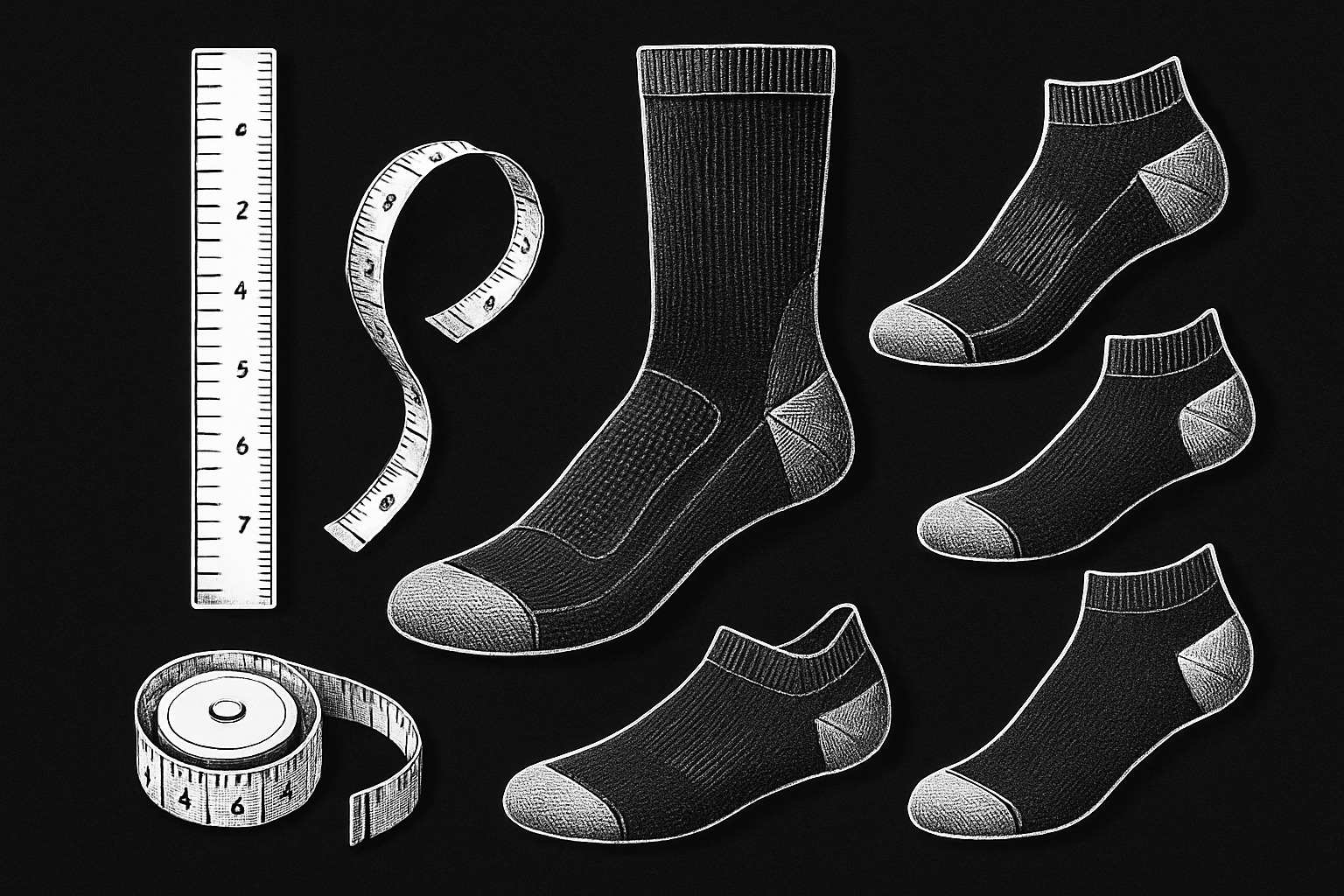
How to Find Your Perfect Sock Size
Choosing the correct size is crucial for your everyday socks. Sock sizing can be confusing, especially with different international standards. Most brands use US, UK, or EU sizes. Here’s a quick comparison:
| US Size | UK Size | EU Size | Foot Length (inches) |
|---|---|---|---|
| 6-8 | 5-7 | 38-41 | 9.25-9.75 |
| 9-11 | 8-10 | 42-44 | 10-10.5 |
| 10-13 | 9-12 | 45-47 | 10.75-11.5 |
Stretch and elastic play a role in how your everyday socks fit. Look for socks with a bit of spandex or elastane for a snug, but not tight, feel. This elasticity keeps socks secure without constricting your circulation.
To measure your feet at home, stand on a piece of paper and trace around your foot. Measure from the heel to the longest toe. Compare your measurement against sizing charts, allowing for a little extra room for comfort.
Common mistakes include buying socks that are too small, which can cause discomfort and blisters, or too large, leading to bunching and slipping. Always check brand-specific charts when shopping for everyday socks, as sizes can vary.
Comfort Features to Look For
When it comes to everyday socks, comfort is king. The right features can transform your experience, whether you’re on your feet all day or relaxing at home.
Key comfort features to consider:
- Arch support: Provides gentle compression for stability.
- Reinforced heels and toes: Extra durability in high-wear areas.
- Seamless construction: Reduces irritation, especially for sensitive skin.
- Breathability: Mesh panels or ventilated weaves keep feet cool.
- Padding: Added cushioning in the sole or heel, ideal for high-impact activities.
These features work together to prevent common issues like blisters, hot spots, and fatigue. For example, seamless toes are a game-changer for those prone to friction or pressure points.
A recent survey found that 70% of buyers list comfort as their top priority when choosing everyday socks. It’s worth investing in pairs with the right support and padding for your needs. Remember, a comfortable fit means you’ll reach for those socks day after day.
Caring for Your Everyday Socks
Taking care of your everyday socks is the secret to comfort, durability, and value. If you’ve ever pulled out a favorite pair only to find holes or faded colors, you know the frustration. The good news? With a few easy habits, you can keep your everyday socks in top condition, saving money and enjoying that fresh-sock feeling every day.
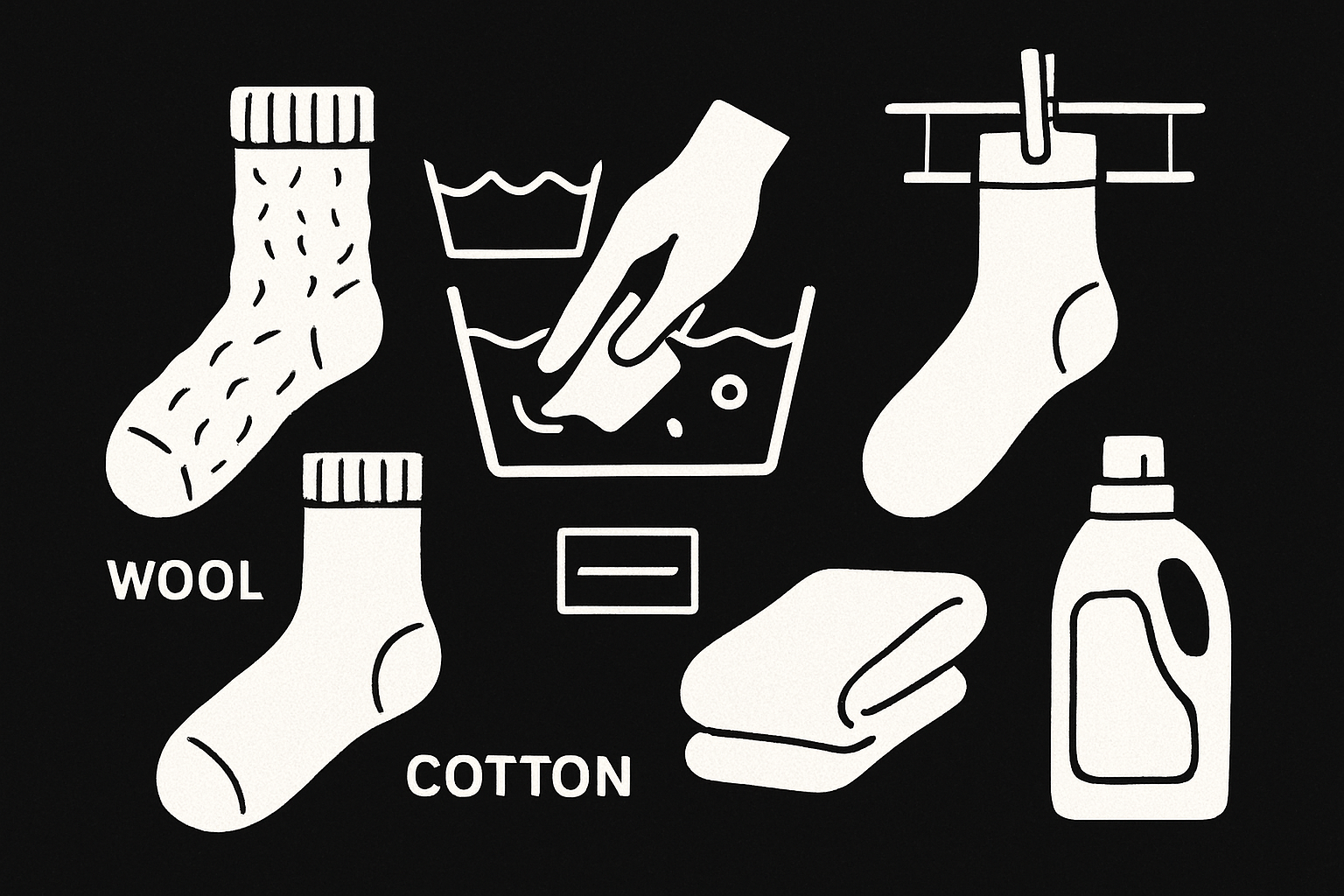
Washing and Drying Best Practices
Proper washing and drying routines can make all the difference for your everyday socks. Start by checking the care label—different materials have unique needs. For example, cotton socks can usually handle warm washes, while wool and bamboo pairs need cooler water to prevent shrinking.
Here’s a quick reference table for washing temperatures:
| Material | Recommended Wash Temp |
|---|---|
| Cotton | 30–40°C |
| Wool | Cold (≤30°C) |
| Bamboo | Cold (≤30°C) |
| Synthetics | 30–40°C |
To avoid color fading, turn your everyday socks inside out before washing. Always use a gentle detergent. Machine washing is convenient, but hand washing preserves softness, especially for wool. Air drying is best for all everyday socks—skip the dryer if you want to avoid shrinkage and keep fibers strong.
If you’re unsure about washing methods or want extra tips for every type of sock, this Sock washing and care guide offers step-by-step instructions to help your everyday socks last longer.
Wool socks deserve special care. Use a mesh bag in the machine to prevent snagging, and never wring them out. Let them air dry flat to maintain their shape and softness. With the right habits, your everyday socks will stay vibrant, soft, and comfortable wash after wash.
Extending Sock Lifespan
Daily wear can take a toll, but a little extra attention will double the lifespan of your everyday socks. Rotate your pairs regularly—this helps distribute wear evenly and keeps each set feeling new longer. Store socks flat in a drawer, not balled up, to prevent stretching and thinning.
Small holes or thinning spots don’t always mean it’s time to toss your everyday socks. A quick stitch can repair minor damage. For more serious wear—like sagging elastic or persistent holes—it’s best to replace them to avoid discomfort.
Here are simple ways to keep your everyday socks going strong:
- Alternate between several pairs to reduce frequent washing.
- Store socks away from direct sunlight to prevent fading.
- Repair minor holes immediately to stop them from growing.
- Watch for signs like thinning fabric, persistent odor, or loss of stretch.
Textile experts say that proper care can double the lifespan of your everyday socks. By following these tips, you’ll not only save money but also enjoy continuous comfort, step after step.
How to Choose Everyday Socks for Your Lifestyle
Choosing the right everyday socks can make a surprising difference in your comfort, style, and even your daily performance. With so many options available, it’s essential to match everyday socks to your unique lifestyle, climate, and budget. Let’s break down the key factors to help you find your perfect pairs.
Matching Socks to Your Daily Activities
Everyday socks play a big role in your comfort throughout the day. The best choice depends on where you spend your time and what you do. Office workers, athletes, and outdoor lovers all have different needs.
Let’s compare features for each lifestyle:
| Activity | Key Features | Recommended Sock Type |
|---|---|---|
| Office/Work | Subtle patterns, breathability, support | Crew, dress, seamless |
| Athletic | Moisture-wicking, cushioning, arch support | Ankle, crew, compression |
| Leisure | Softness, versatility, fun designs | No-show, crew, bamboo |
| Outdoor | Durability, insulation, reinforced toes | Wool, hiking, knee-high |
A teacher, for example, spends hours on their feet and benefits from cushioned, supportive everyday socks. A runner needs moisture control, so synthetic blends or technical socks are best. Hikers should seek out wool blends for warmth and durability on the trail.
Don’t forget: matching everyday socks to your activities isn’t just about comfort—it can also prevent blisters, fatigue, and even foot odor. Take a moment to consider what your feet really go through each day.
Seasonal Considerations
Seasons change, and so should your everyday socks. Choosing the right pair for the weather keeps your feet healthy and comfortable year-round.
Here’s how to adapt:
- Summer: Lightweight, breathable everyday socks in cotton, bamboo, or moisture-wicking synthetics prevent sweat and overheating.
- Winter: Insulated, heavyweight socks—think merino wool or thermal blends—trap warmth and block the chill.
- Layering: For extreme cold, layering thin everyday socks under thicker pairs adds insulation without bulk.
- Transitional weather: Midweight socks with ventilation panels keep feet comfortable in unpredictable climates.
Imagine swapping thin, no-show everyday socks for cozy, knee-high wool pairs as temperatures drop. It’s a simple switch that can make winter walks more enjoyable.
Remember, your sock drawer should evolve with the seasons. Stock up on different weights and materials to stay comfortable, no matter the weather.
Budgeting and Value: How Much Should You Spend?
With so many choices, it’s tempting to grab the cheapest everyday socks. But quality matters. Investing wisely can save you money and hassle in the long run.
Here are tips to get the best value:
- Multipacks: Great for basics—cost per pair is low, ideal for casual everyday socks.
- Premium pairs: Higher upfront cost, but offer better materials, durability, and comfort. Perfect for work or special use.
- Assess cost per wear: A $20 pair that lasts 100 wears is often a better deal than a $5 pair that wears out after 10.
- Check features: Reinforced heels and toes, arch support, and quality stitching all boost lifespan.
In 2025, standard everyday socks range from $3 per pair (basic cotton) up to $25 for luxury wool or technical blends. When evaluating options, focus on durability and comfort, not just price. For more advice on maximizing the life of your investment, check out these sock care tips for durability.
In summary, consider your daily activities, the season, and your budget when choosing everyday socks. The right pairs will keep you comfortable, stylish, and ready for anything.
Common Sock Problems and Solutions
Everyday socks are a small but mighty part of your routine, but even the best pairs can run into trouble. Let’s break down the most common sock problems, why they happen, and how you can solve them for maximum comfort and durability.
Preventing and Fixing Blisters, Odor, and Wear
Blisters, unwanted odors, and premature wear are top complaints with everyday socks. These problems often stem from poor fit, low-quality materials, or improper care routines.
Common Causes:
- Friction from ill-fitting socks
- Moisture trapped by non-breathable fabrics
- Over-washed or worn-out fibers losing their shape
Solutions:
- Opt for everyday socks with moisture-wicking materials like merino wool or bamboo to reduce sweat and odor.
- Choose seamless designs and cushioned soles for better protection against blisters.
- Wash socks at recommended temperatures and avoid harsh detergents. For luxury pairs, following a Luxury socks care guide can help maintain softness and shape.
Example: Runners often wear synthetic blends or double-layer socks to minimize friction and blisters. Teachers and nurses prefer cushioned socks for long days on their feet.
| Problem | Cause | Solution |
|---|---|---|
| Blisters | Friction | Seamless, cushioned socks |
| Odor | Sweat buildup | Antimicrobial materials |
| Wear | Overuse/care | Rotate, gentle wash cycles |
Everyday socks that fit well and are cared for properly will serve you longer and keep your feet happier.
Dealing with Slipping, Bunching, and Sagging
Nothing is more distracting than everyday socks that slip into your shoes, bunch at your toes, or sag at the ankle. These issues usually result from mismatched sizing, loss of elasticity, or unsuitable designs for your footwear.
Tips to Prevent Movement:
- Select the right size by checking brand-specific charts.
- Look for reinforced cuffs, ribbed construction, or added elastic for a secure fit.
- Match sock style to your shoes—no-show socks for sneakers, crew socks for boots.
Did you know? A 2024 survey found 55% of people cite slipping as their main sock annoyance. Everyday socks with a snug, comfortable fit can make all the difference.
If you notice your socks bunching or sagging, try switching brands or styles. Sometimes, a simple change in material or construction (like arch support bands) can eliminate the problem entirely.
When to Replace Your Socks
Even the best everyday socks have a lifespan. Worn-out socks offer less support and may harbor bacteria, raising health concerns.
Signs It’s Time to Replace:
- Thinning fabric or visible holes
- Stretched-out cuffs that won’t stay up
- Persistent odors, even after washing
Health Risks: Old socks can trap moisture and bacteria, increasing the risk of fungal infections or skin irritation.
Rotation Tips:
- Rotate pairs to spread out wear.
- Store socks flat to prevent overstretching.
- Replace everyday socks every 6–12 months, depending on usage and material.
Regularly updating your sock drawer keeps your feet healthier and more comfortable. With a little attention to care and replacement, your everyday socks will always be ready for the day ahead.
